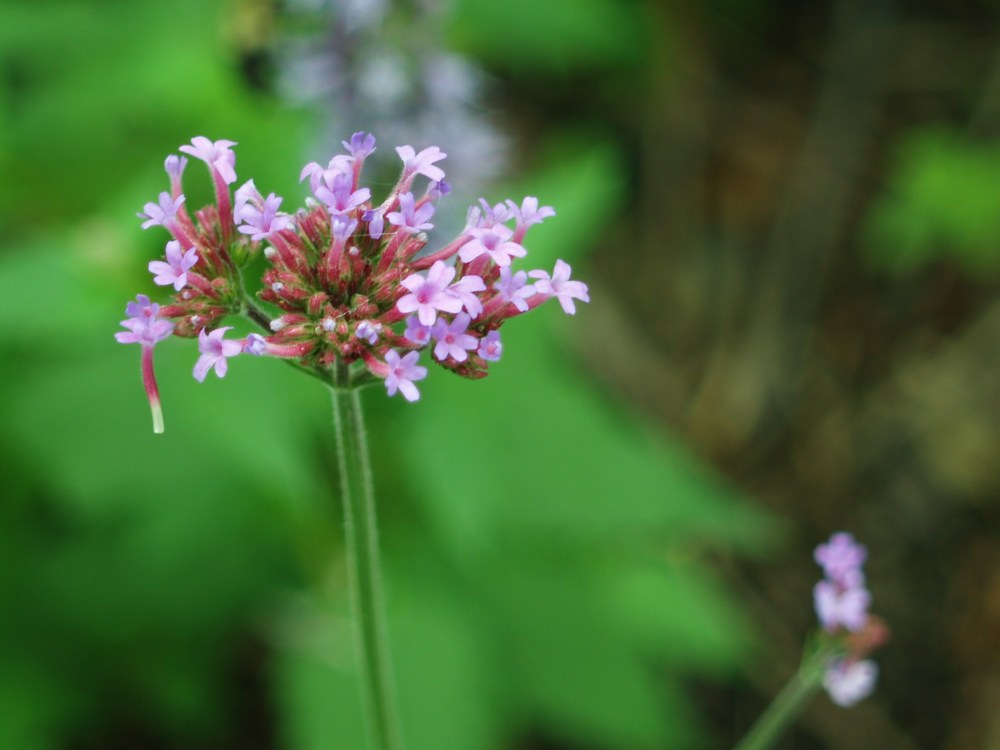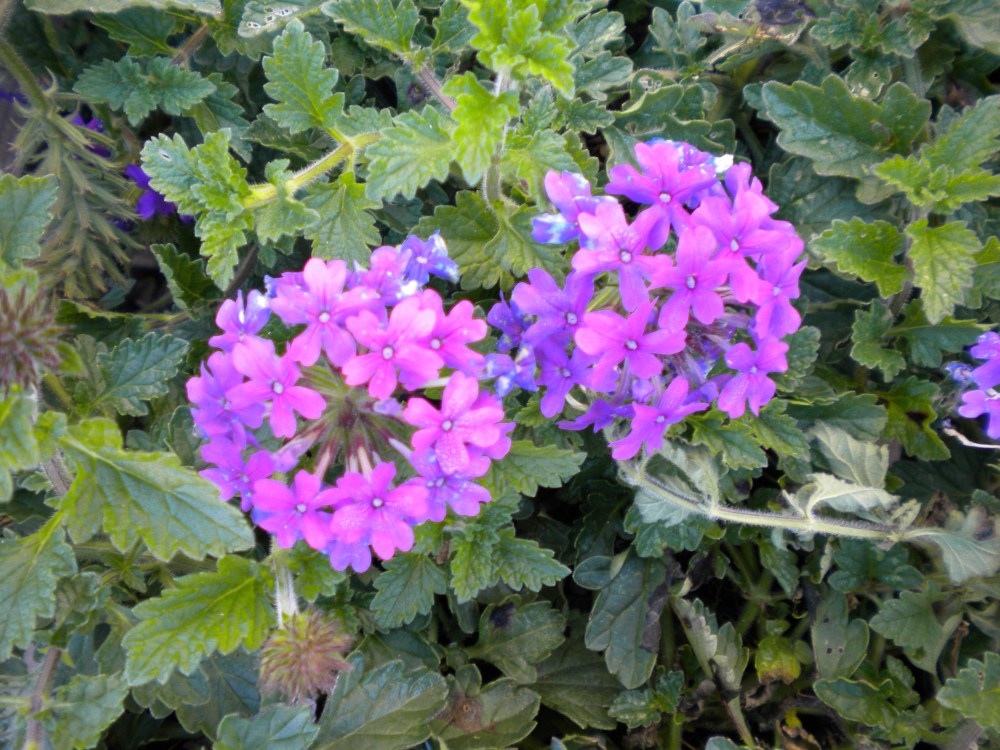Long ago I planted several tall verbenas (Verbena bonariensis, below) in the garden, and as it is prone to do, it seeded itself about so that tall seedlings sprouted just about anywhere with a bit of sun. The plant is barely obvious until it blooms, with tall stems and few leaves, and it’s easily mistaken for a weed. Some gardeners might even define it as a weed, and of course I took for granted that it would always be around the garden, somewhere. And then the sun went away, and shade encroached as the dozens of trees I planted grew larger. I suppose I pulled a few unwanted, misplaced seedlings, and then there were none. The verbenas disappeared completely.
Last week I was only slightly surprised to see a verbena seedling interspersed with tall stems of a recently planted hummingbird mint (Agastache). The flower color and height of the stems of the agastache and verbena were similar, but the flower was distinctly different, and I recognized it immediately. I assume that seed from the verbena jumped into the hummingbird mint’s pot in the nursery where I purchased it, and I’m overjoyed to have tall verbena back. I hope that it will reseed again with abandon. Unwanted strays are easily removed, and there are spots here and there where I’d love to see the tall, almost leafless stems arching over neighboring shrubs. I’ve been tempted more than a few times to plant it again, and of course now the verbena is back without costing me a cent. I will have to figure how the seeds will get from the front to the back garden, and perhaps I’ll end up planting one after all, but one plant goes a long way in creating bunches more. 
Tall verbena is not to be confused with the low growing but marginally cold hardy Homestead Purple (above) or other annual verbenas that flower profusely. Tall verbena is a wilder, less disciplined sort that depends on neighboring plants for support. In this garden where every plant must fend for itself, where misplaced seedlings are most often welcomed, I’m delighted to have tall verbena back.
I once saw Verbena bonariensis referred to as Verbena on a stick. I think this is a very appropriate name. I had one lonely plant reseed under a maple tree and it bloomed.
Verbena on a stick is an apt description for the tall, mostly leafless stems. Tall verbena must be planted where it can be supported by shrubs or tall perennials. It is tall and lanky, and cannot stand up without the help of neighbors. But, it has an odd charm that earns its keep.
Beautiful, and I’ve not seen tall verbenas prior. Thanks. I do not care for the low-growing spreading verbena as they tend to take over my Southern (South-east Texas)Garden, and become trouble. Plus I simply cannot stand the smell of verbena. Do the tall verbena spread and do they smell as bad as the spreading kind?
Enjoy your emails. Thanks,
Dottie Cline
[email protected]
I’m sorry, I have a very poor sniffer, so I can’t tell you if tall verbenas have a scent or not. They spread by seed, but I’ve never seen the clumps grow in width, and certainly not enough to cause a problem for neighbors.
Very pretty! Nothing is more appreciated than a garden surprise! 🙂